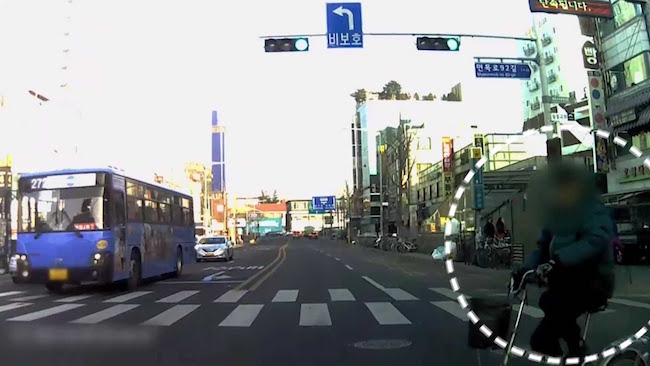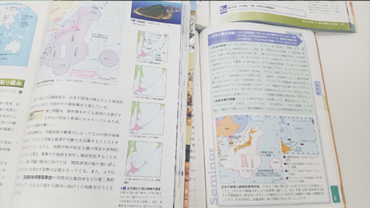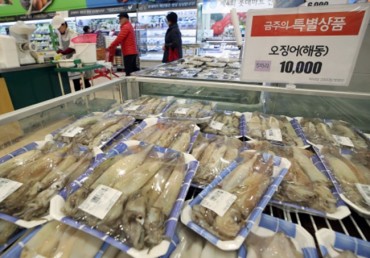
With the arrival of spring likely to tempt more South Koreans to venture outdoors and hop on a bicycle, the government is taking bike safety seriously, as recent findings have shown that traffic accidents involving cyclists are on the rise. (Image: Yonhap)
SEOUL, April 19 (Korea Bizwire) — Four days ahead of “Bicycle Day” (April 22), the Ministry of the Interior and Safety held an event promoting cycling safety at Seoul’s Jamsil Sports Complex yesterday.
Taking place in an area of the park reserved for learning cycling and practice for beginners, 538 Seoul children were taught safe riding methods in simulated environments resembling real traffic conditions.
With the arrival of spring likely to tempt more South Koreans to venture outdoors and hop on a bicycle, the government is taking bike safety seriously, as recent findings have shown that traffic accidents involving cyclists are on the rise.
According to the results of a multi-year analysis into domestic traffic accidents that was announced by the Korea Road Traffic Authority yesterday, 14,937 traffic cycling accidents occurred in 2016, an increase of 71.2 percent from 2007. The data on casualties from the incidents was more of a mixed bag; though fewer deaths were recorded in 2016 – a drop from 304 to 258 – injuries were far more prevalent last year, soaring by 73.2 percent to 15,360.
With an increase of close to 3 percentage points, cycling accidents have subsequently taken up a larger share of all traffic accidents in the nine-year span, to the point that 7 out of 100 traffic accidents involved a cyclist.

Against this backdrop, the prevalence of “drunk cycling” – cyclists driving after consuming alcohol – has been recognized as a growing threat to public safety, though figures on drunk riding and traffic accidents have yet to be compiled. (Image: Yonhap)
Against this backdrop, the prevalence of “drunk cycling” – cyclists driving after consuming alcohol – has been recognized as a growing threat to public safety, though figures on drunk riding and traffic accidents have yet to be compiled.
Dr. Hwang Sae-hwan of St. Mary’s Hospital in Bucheon is one concerned voice that has called for greater awareness of the “cycling under the influence” issue in the past, saying,” The danger is being underestimated, even though the risk of injury stemming from critical accidents resulting from drunk cycling is high.”
Research conducted by Hwang and his colleague Dr. Lee Joong-ho found that 1 out of 8 adult cyclists had biked after alcohol consumption at least once, with more of those middle-aged or older admitting to having done so.
Legally, cycling after drinking is barred under South Korea’s Road Traffic Act, but the lack of regulations outlining specific penalties has made any efforts to crack down on this activity a difficult proposition.
Fortunately for the vast majority of the general public who believe that drunk cycling needs to be punished – 83.4 percent of responses said so in a 2016 survey conducted by the National Police Agency – starting in September, a revision to the Road Traffic Act that would dole out a maximum 200,000 won fine or a stay in detention will go into effect.

Legally, cycling after drinking is barred under South Korea’s Road Traffic Act, but the lack of regulations outlining specific penalties has made any efforts to crack down on this activity a difficult proposition. (Image: Yonhap)
This first step still falls far short of the measures discouraging drunk cycling enacted by other highly developed countries that South Korea compares itself to. Cyclists can expect to part with as much as 1,500 euros in Germany and up to 2,500 pounds in England, while in neighboring Japan, offenders can be fined 100,000 yen or be struck with a 5-year jail term.
Besides the danger of accidents, another good reason to curb drunk cycling is the sizable overlap between drunk cyclists and drunk drivers. Hwang and Lee’s study found that 27.2 percent of the 4,833 bike-riding participants had engaged in both drunk cycling and drunk driving. On the other hand, only 8.4 percent who had never gotten on a bicycle while inebriated had driven a car under the influence. This pattern was found among motorcyclists as well.
Add to this the finding by Hwang and Lee that heavy drinkers who regularly imbibe alcohol and are considered to be high-risk drinkers exhibit a greater tendency to take to the handlebars when intoxicated, and it becomes evident that this burgeoning public safety issue is a matter that needs to be regarded with greater scrutiny.
S.B.W. (sbw266@koreabizwire.com)




![[Feature] Korean Edition of “The Big Issue” Proves Successful Social Enterprise Model [Feature] Korean Edition of “The Big Issue” Proves Successful Social Enterprise Model](http://koreabizwire.com/wp/wp-content/uploads/2014/05/big-issue_korean-370x481.jpg)

